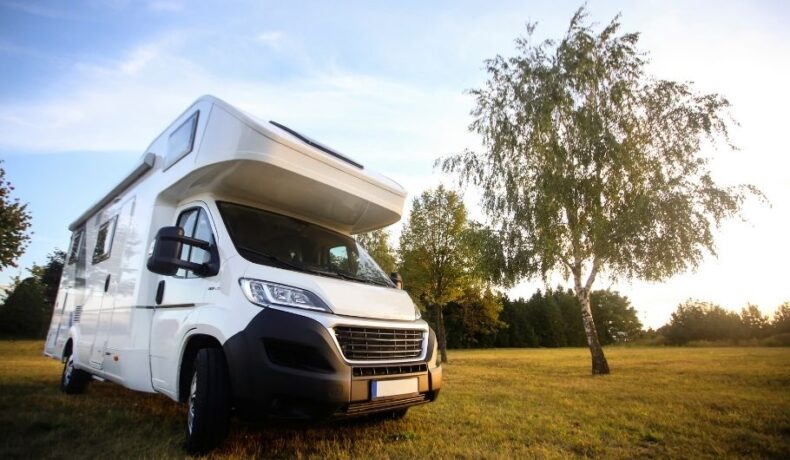
Are you thinking of living in your RV full-time, or are you interested in traveling to off-grid locations? Then in our opinion, installing solar panels onto your RV would indeed be a smart investment.
But how many solar panels do you need for an RV?
Typically, an RV will require anywhere from two to four 200-watt monocrystalline solar panels to compensate for its energy usage. The precise quantity of solar panels required will vary based on factors such as the RV’s location and the amount of electricity consumed on a daily basis.
This article will guide you in calculating the suitable number of solar panels needed for your RV, depending on your individual situation.
Affiliate Disclaimer
Table of Contents
How Many Solar Panels Do I Need For My RV?
As with sizing a residential solar installation, the number of solar panels you’ll need for your RV vastly depends on the following things:
- Peak sun hours
- Electrical consumption
- Solar panel output rating
Because RVs are designed for mobility, their solar systems must be compact, lightweight, and durable enough to withstand the rigors of travel.
Additionally, RVs tend to have limited roof space, which can also impact the number and size of solar panels that can be installed. This means that you as the RV owner must carefully consider your energy requirements and the available space when designing and installing your solar system.
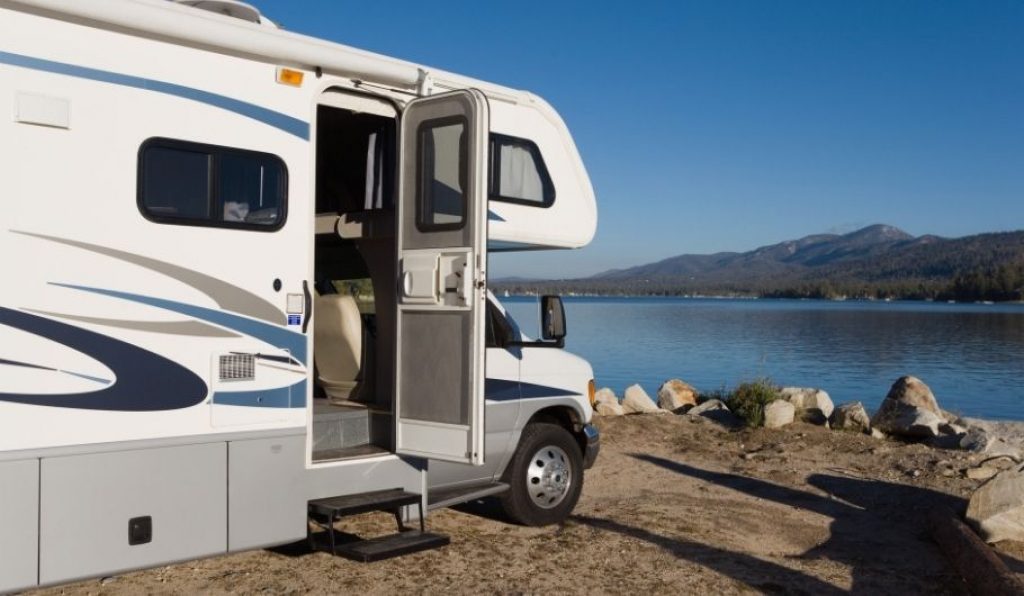
We’ll provide you with the necessary knowledge to size your RV’s solar system by taking into account the three factors mentioned above. Firstly, we will elaborate on each of these factors, and subsequently, we will equip you with the formula to calculate the number of solar panels required for your RV.
Peak sun hours
It cannot be emphasized enough that peak sun hours are the crucial factor in determining the number of solar panels needed for your RV.
Different locations have different amounts of GHI (Global Horizontal Irradiation). If you don’t know what this is, I recommend reading this article.
In short, Global Horizontal Irradiance (GHI) represents the amount of solar radiation that reaches the earth’s surface, accounting for the impact of changing weather patterns.
Knowing the amount of peak sun hours specific to your country is essential to calculate the optimal number of solar panels required for your RV.
We have made a resource for Americans, Australians, South Africans, and Brits to determine their area’s peak sun hours. If our resources do not cover your country/area, go check out this website.
Once you have established the peak sun hours for your location, be sure to take note of this number.
Electrical consumption
The second most important aspect of sizing your RV solar system is knowing how much power you consume.
Once you have this information, you can determine the amount of solar energy that needs to be generated in order to keep your RV appliances running smoothly.
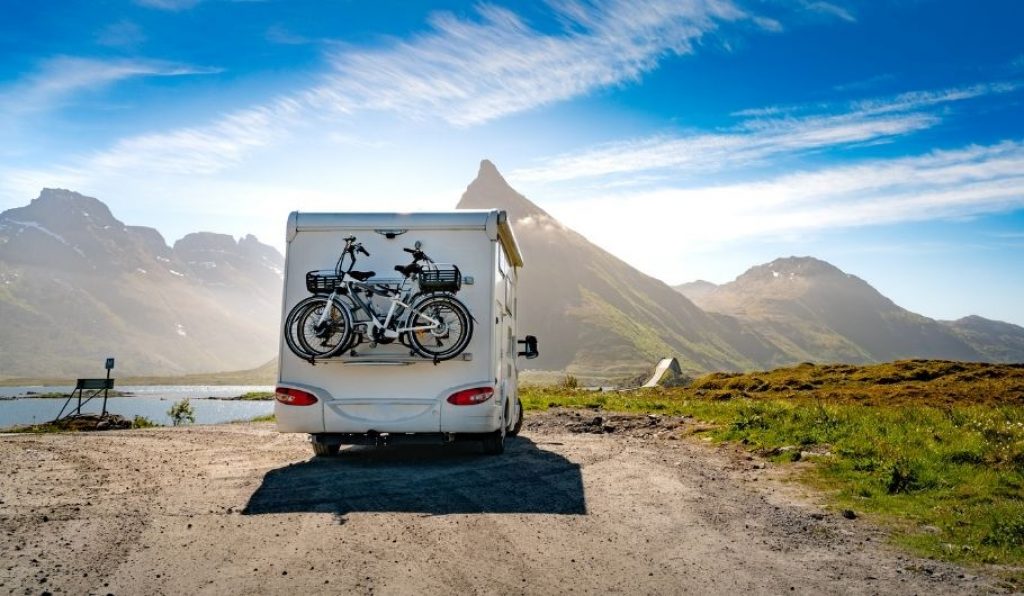
So, how do you determine the overall power consumption of your RV?
Well, on average, an RV will use between 4 – 15kWh a day. This comes out to roughly 124 – 465 kWh a month or 1,488 – 5,580 kWh a year.
With that being said, we do recommend making a table like the one below, which outlines all the appliances you use in your RV, their wattage, and the number of hours each is used.
| Appliance | Watt (W) | Hour usage per day (h) | Daily Consumption (Wh) |
|---|---|---|---|
| Small Fridge | 40 | 24 | 960 |
| Microwave | 800 | 0.5 | 400 |
| Plasma TV | 200 | 4 | 800 |
| Cellphones (x3) | 54 | 2 | 108 |
| LED Bulbs (x8) | 80 | 5 | 400 |
| Laptop (x3) | 300 | 4 | 1200 |
| Coffee Maker | 1000 | 0.15 | 150 |
| Water Purifier | 60 | 1 | 60 |
| Blender | 500 | 0.1 | 50 |
| Water Heater | 1440 | 0.5 | 720 |
| Total Daily Consumption (Wh) | 4,848 |
The kWh consumption will vary significantly depending on whether your RV utilizes propane for heating and cooking or relies solely on electricity. For the purpose of our example, we will consider an RV that uses propane. However, you may adjust the calculations based on your RV’s specific setup.
Solar panel output rating
Lastly, you need to determine your solar panel’s power rating.
Most RVs equip either 100-watt or 200-watt solar panels on top of their roof.
We would recommend 200-watt solar panels for your RV, like the ones from Renogy or Newpowa, for example.
Solar Panel Formula For RV (Example 1)
Once you have collected all the necessary information related to the three points mentioned earlier, you can use our specially designed-formula to calculate the required number of solar panels for your RV.
Don’t worry if you feel intimidated by the math involved in the calculation. We assure you that it’s easy to understand once you become familiar with the different units of measurement used.
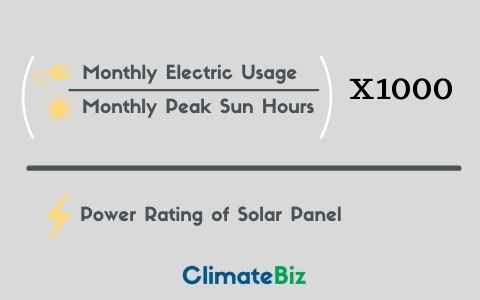
Okay, so to figure out how many solar panels your RV will need, we will use the formula above.
(Monthly electric usage ÷ monthly peak sun hours) x 1000 ÷ solar panel power rating.
Let’s start with an example.
Let’s say you’re planning to travel across Arizona in your RV. On average, this state receives 5.7 peak sun hours per day or 176.7 peak sun hours per month. (We know this because we used this resource.)
So, let’s apply our formula.
First, you must convert your electricity consumption from Wh to kWh, so 4,848 Wh = 4.8 kWh.
4.8 kWh x 31 days = 148,8 kWh monthly.
148,8 ÷ 176,7 = 0,842 x 1000 = 842 watts.
842 ÷ 200 = 4,21
By applying our formula, you can determine that an RV traveling through Arizona and utilizing 4.8 kWh of electricity per month will require approximately 4.21 (200-watt) solar panels to offset its entire energy consumption. Since solar panels cannot be split into half units, we suggest rounding up the figure to 5 solar panels.
Solar Panel Formula For RV (Example 2)
Let’s do another example with the exact same RV using the same electricity consumption, except this time it is driving through Michigan.
148,8 ÷ 108 = 1,37 x 1000 = 1377 watts.
1377 ÷ 200 = 6,8 (7) solar panels needed for RV in Michigan.
As you can see, the location of your RV alone greatly affects the number of solar panels it will require. With that being said, let’s do one more example.
Solar Panel Formula For RV (Example 3)
Now, let’s take an example of an RV that consumes much more electricity than the previous ones. Suppose an RV consumes 400 kWh of electricity per month while traveling through Idaho.
To calculate the required number of solar panels:
400 ÷ 120 = 3,33 x 1000 = 3333
3333 ÷ 200 = 16.665 (17)
Therefore, the RV in Idaho consuming 400 kWh of electricity per month will need approximately 17 solar panels.
As you can see from these examples, the number of solar panels required for an RV can vary significantly. However, by using our formula, you can easily determine your basic solar panel requirements.
FAQ
Is it cost-effective to install solar panels on an RV?
Yes, installing solar panels can be cost-effective in the long run, especially if you plan to live in your RV full-time or travel to off-grid locations frequently. The initial investment can be offset by savings on electricity and the freedom to camp without relying on external power sources.
Can I install the solar panels on my RV myself?
While it’s possible for a DIY enthusiast with the right tools and knowledge to install solar panels, it’s often recommended to seek professional installation to ensure safety, and optimal performance, and to maintain any warranties on the panels.
How do I maintain my RV’s solar panels?
Regularly cleaning the panels from dust, debris, and bird droppings, and checking for any damages or loose connections can help maintain their efficiency. It’s also essential to monitor the system’s performance to ensure it’s working optimally.
Are there any tax incentives or rebates for installing solar panels on an RV?
Some regions offer tax incentives or rebates for solar installations. It’s advisable to check with local authorities or renewable energy organizations in your area to see if any incentives apply to RV solar installations.
Can I use my RV’s solar system during cloudy days or at night?
Solar panels generate less power on cloudy days, but they still produce some energy. For nighttime use, you’d rely on stored energy in your RV’s battery system, which gets charged during the day.
What happens if one of my solar panels gets damaged while traveling?
If a panel gets damaged, it might reduce the overall efficiency of your system. It’s essential to check the panel and replace it if necessary. Having a durable and high-quality solar setup can minimize the risk of damage during travel.
Final Thoughts
To sum it up, putting solar panels on your RV is a wise move, especially if you plan on living in it full-time or going off the grid.
However, the number of panels you need depends on a few things, like how much energy you use, how many hours of sunlight you get, and how powerful the panels are.
RVs need solar systems that are small, light, and strong, so you have to think carefully about how much energy you need and how much space you have. Considering these things, you can use our easy formula to figure out how many panels your RV might need.
To deepen your understanding of the topic at hand, we suggest taking a look at the following three articles:
- How to install an RV inverter correctly
- Mounting solar panels on an RV
- Using a solar generator in your RV
If you have any questions, feel free to ask them in the comments section below. We would be happy to help you with any solar/RV-related queries.
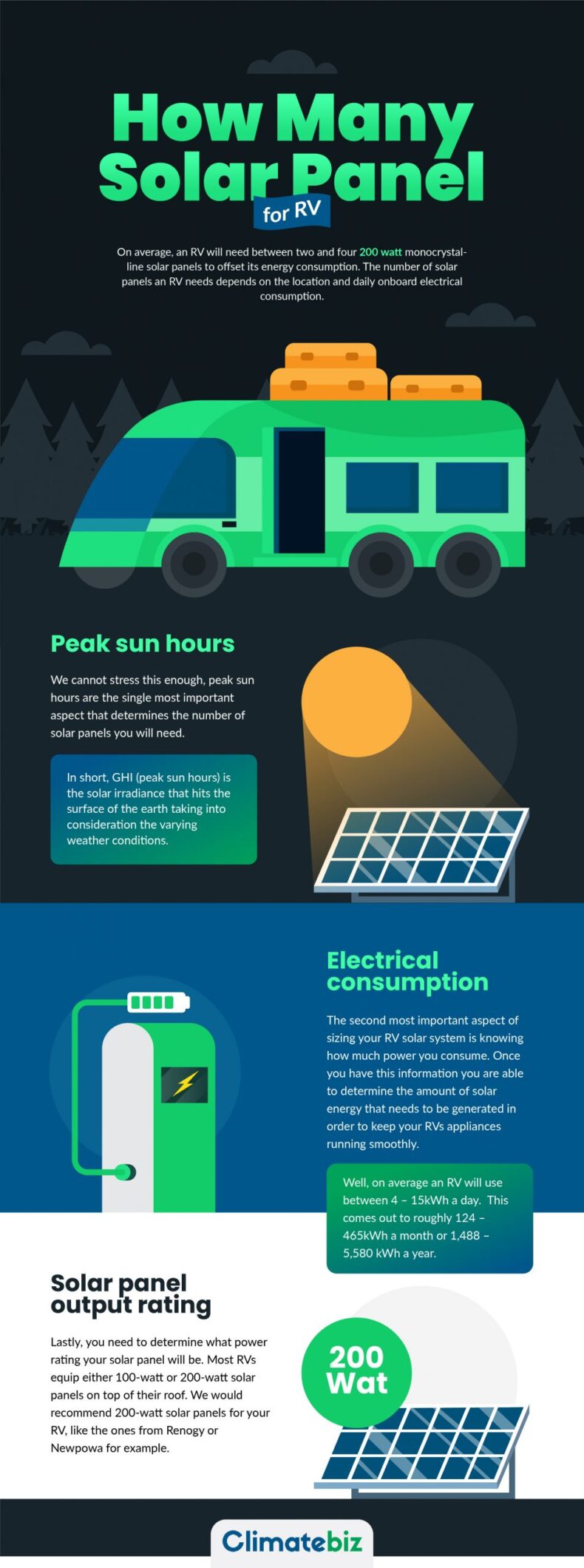










When your RV isn’t in use, you only need 200 watts of solar electricity to keep your battery bank charged. Traveling by RV, on the other hand, will necessitate more. A 700-watt solar system for toy haulers was successfully installed by me. This appears to be the sweet spot for many RVers who use inexpensive inverters.
Can you tell me what ALL I need to be able to run completely off grid or run fully solar meaning a/c fridge tv microwave. I currently have a 7,000 watts generator which is getting very expensive I also have 100 watts solar panels connected to a battery and that takes care of fridge and lights only. It’s getting hot and I’d like to run a/c all the time at least.
Hi Norma,
If you could give me a list of all the appliances you would like to run, their wattages, and the amount of time you would like to run them for, I can give you a breakdown of what system size you will need. Also, where are you located currently?
Feel free to take this over to the forum too: https://forum.climatebiz.com
Hello I’ve been trying to figure how many panels I would need can u please help. I use the fallowing.
Flat screen tv 120v.60hz 0.8 a
Xbox gaming system 170 watts 2.42 amps
Box fan 120 volts
Norcold fridge 120 amps 14 watts
Led lites 12 volts
Security camera 12 Volts dc / 500 MA
Use of items
Between game n tv run about 10 hrs if that.
Fan 8 hours
Lites when necessary
Camera 15 hrs
My area is Calif.
South peak hours 5.2 but have min 12 of sun lite
Hi Kenny,
So as it stands you want to run the following:
Flat Screen TV: 100 watts (10 hours) – 1000 Wh
Xbox: 170 watts (10 hours) – 1700 Wh
Fan: 30 watts (8 hours) – 240 Wh
Fridge: 50 watts (24 hours) – 1200 Wh
LED Lights: 10 watts (5 hours) – 50 Wh
Security Camera: 15 watts (15 hours) – 225 Wh
Total watt hours usage per day: 4415 Wh
Total watt hours usage per month: 132 kWh.
Now we can use the formula provided: 132 (energy usage) / 156 (peak sun hours) = 0.846 x 1000 = 846 watts.
This means you would need an 846-watt solar system to offset your energy usage.
Please note, that this is a very rough calculation. other considerations such as inefficiencies have not been taken into consideration. Also, I have calculated your watt hour usage roughly based on the limited information you provided me.
I hope this helps.
Yes it helps alot I thank you very much at least I now have a number to run with in order to by a solar kit. Thank you again for yr time n help. Have a great day
Hey there so I have a pull behind camper. Only going to be using solar to charge a phone or two, a mini fridge and a fan or two. The camper is roughly 20’. I’ll only ever have the mini fridge constantly running. Not sure how big of a solar panel I’ll need. Thank you in advance.
Hey Brandon, if you could share the total wattage rating of your fridge?
We are prewired for ZAMP and have been advised that battery needs to be at 70% or more to charge. Is this the case with all solar and why. Thanks for any info on this.
Hi David, thanks for reaching out. This all depends on which type of battery you buy. Different battery technologies have different DoD’s.
I would recommend checking out some of our other dedicated articles on batteries. We have quite a lot of information on the subject.
You can find those articles here: https://climatebiz.com/category/solar-batteries/